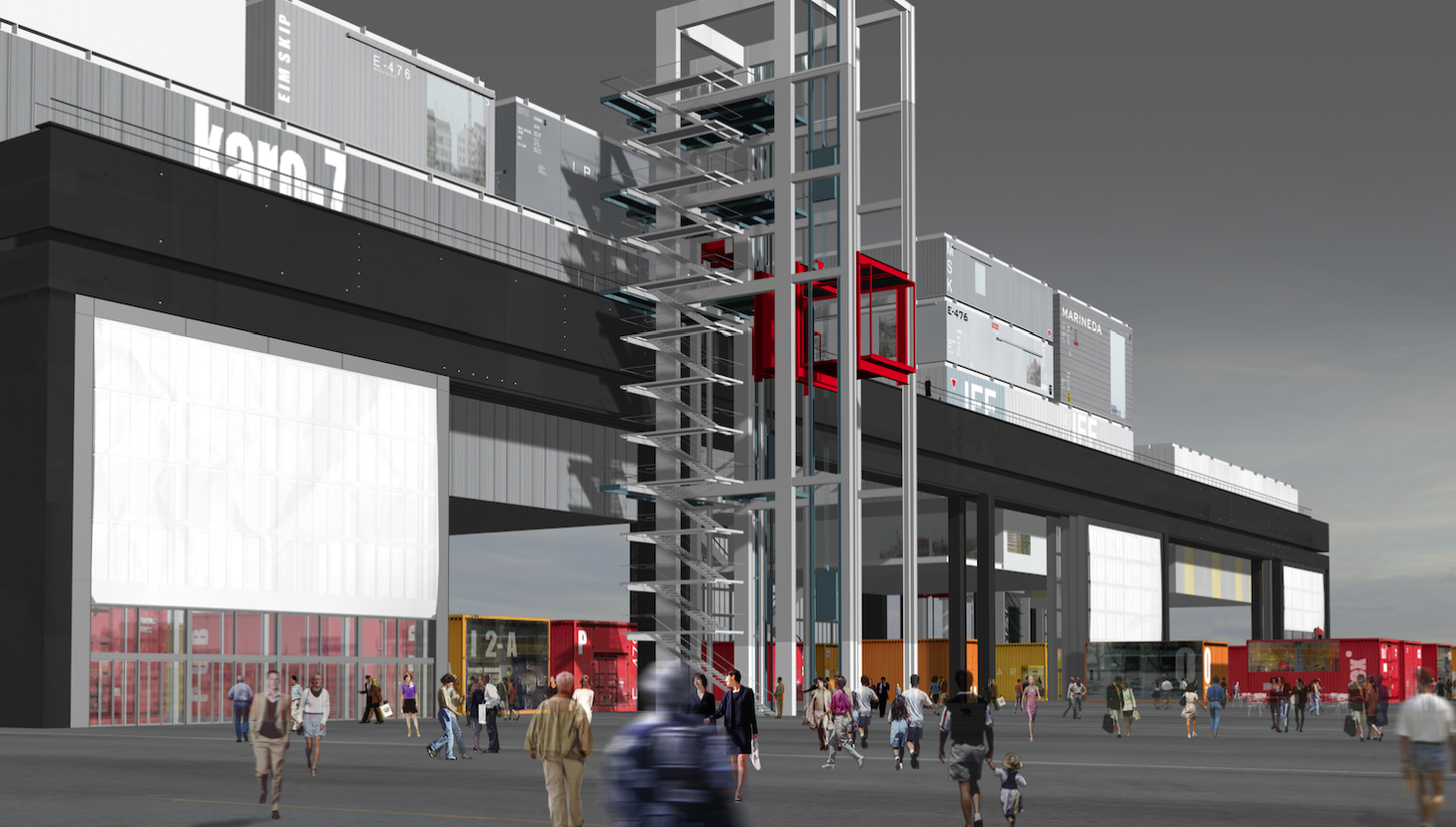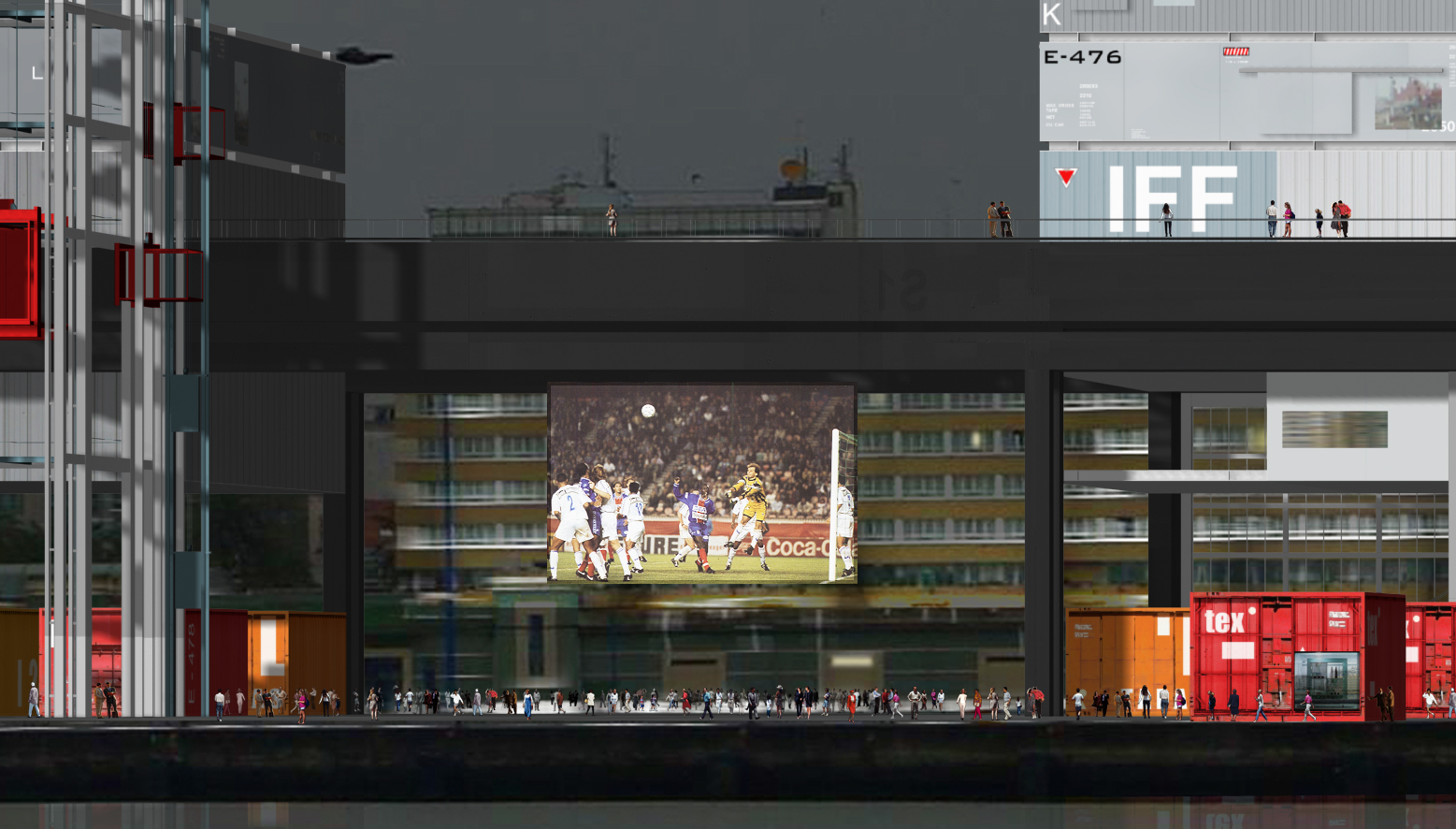Congress and leisure centre
- A Coruña, Spain
The Quay
La Coruña isn’t just a port. It’s an extreme port, a tip of the continent lying in the middle of the ocean. The poetry of the place stems from this. From what we know and from fantasy. Fantasy sparked by the quay and the boats, and the harbourfront that connects them: the port.
Building a commercial centre, with meeting places and retail outlets, on the harbourfront must not translate into a reduction of the port, an amputation of the port, but the opposite: its expansion.
What we propose is to not construct an urban program on the harbourfront, but to continue to construct the port’s history.
To do this, we want to keep the harbourside readable, defined as it is by its enclosure – the surrounding wall and gate – and by its concrete and asphalt floor. The architecture we’re proposing lies in its ambit, uses its materials, and is an embodiment of the machinery of a working port, dictated by a programmatic logic and an efficiency that is the basis of the beauty of the quays: gantry cranes, freight lifts, travelling cranes, large-scale mobile units. We’ve harvested the colours: they’re the ones that have already come into port…
What we’ve imagined, then, is an arcade 200 metres long and 15-20 metres high, mostly enclosed by enormous sliding doors made of metal and glass and fitted with large blinds.
Inside, large carefully aligned containers house shops and restaurants. Every restaurant has a weatherproof terrace and a view of the harbour and boats. Cinemas are grouped together in a street reiterating the dense quayside: access is through a brasserie, and the perspective created ends in a sort of large, slowly turning radar that relays images and program information.
The three-room Congress and Leisure Centre is located above and is held up by the gantry crane. It enjoys a sweeping view over the entire harbourfront.
It’s designed to be a reception area of great flexibility; the rooms can be opened up to the broad arcade and to a space we call the screen space, where all kinds of festive or commercial events can be held, based around one or two giant screens. These events might be gatherings to watch a replay of a football match, or concerts, or an extra-large conference, or major festivals…
Other elements of the program, whether sporting (gymnastics), cultural (exhibitions) or commercial (ten-pin bowling, a casino), have been programmed or are programmable in synergy with the Congress and Leisure Centre above the arcade. The whole thing is fluid.
The scale is harbourwide, the scale of the great arcades and dockyards. There is no competition between the scale of the machinery of a working port and the scale of the town’s buildings. On the contrary, poetry arises from a meeting of the two that reinforces the life of the port and its idiom. Pedestrians and apartment-dwellers all enjoy unobstructed views since the ‘quay’ is both covered and open, as the sliding walls are glazed: views and open spaces remain at scale for pedestrians, car drivers and residents alike.
The new port machine will be a magnet for visitors coming off the cruise ships. A terrace walkway greets them and takes them to the ‘quay’ as a new symbol of the town.
This way the town reinforces the port and the port reinforces the town. La Coruña shores up its image as an extreme port and this only underscores the strategic importance of the new program, if the latter is designed as something other than a generic public building, by being a bit more than a conference, exhibition, sports and retail facility.
More than ever, the spirit of the place will allow it to transcend its location.
Jean NOUVEL





